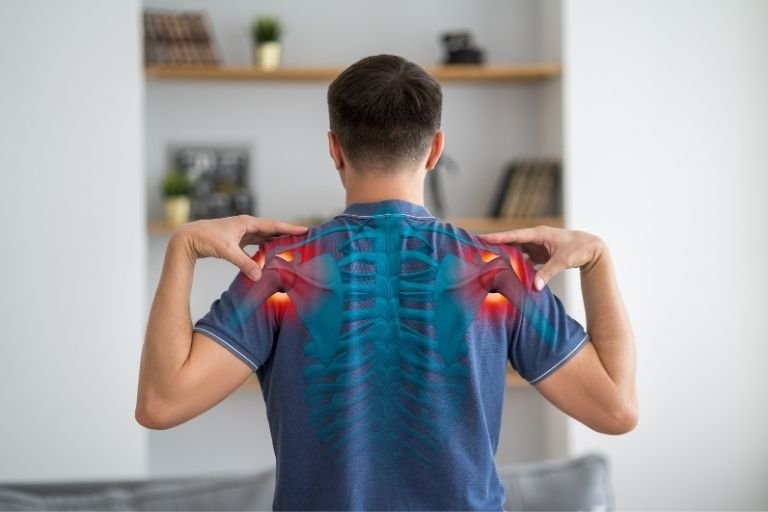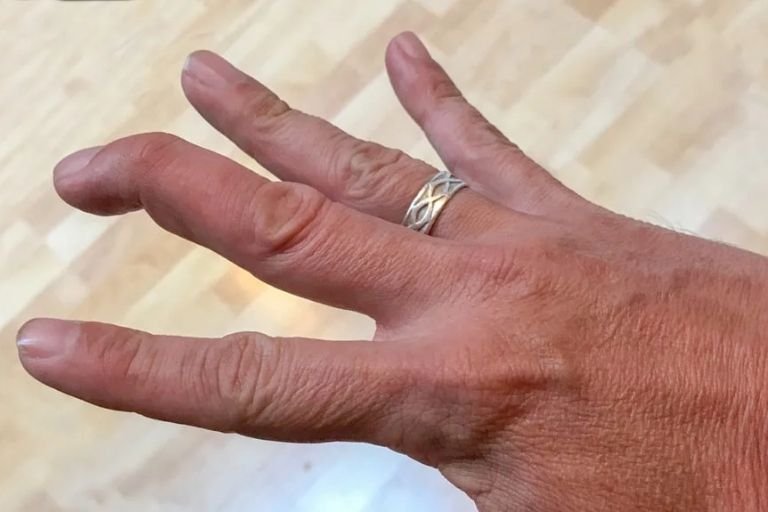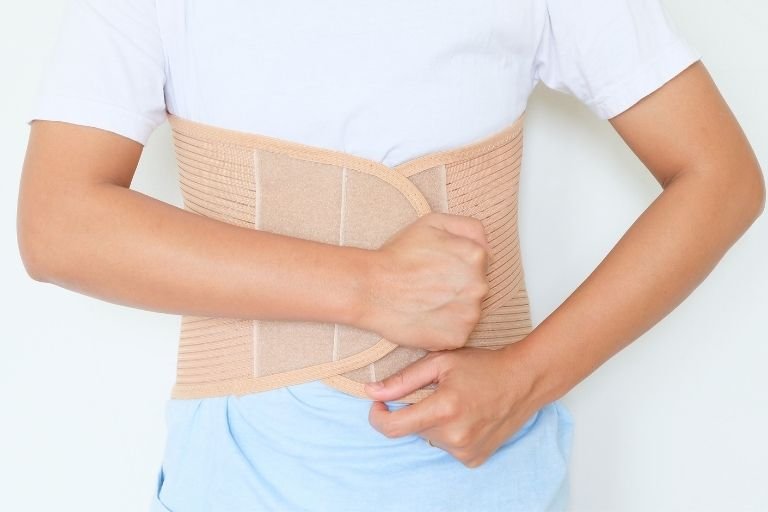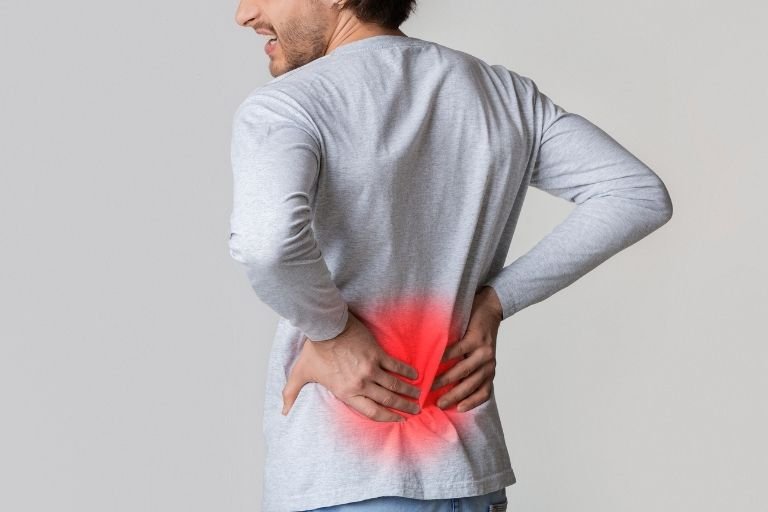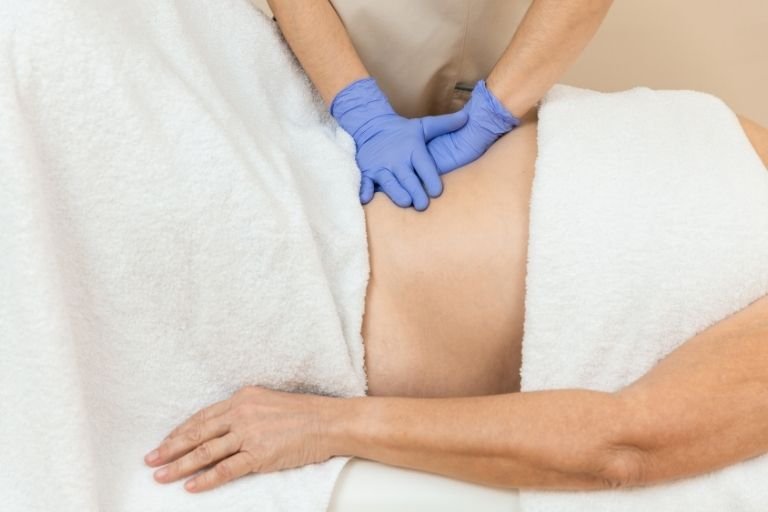- Fitwell Physiotherapy
Bunion
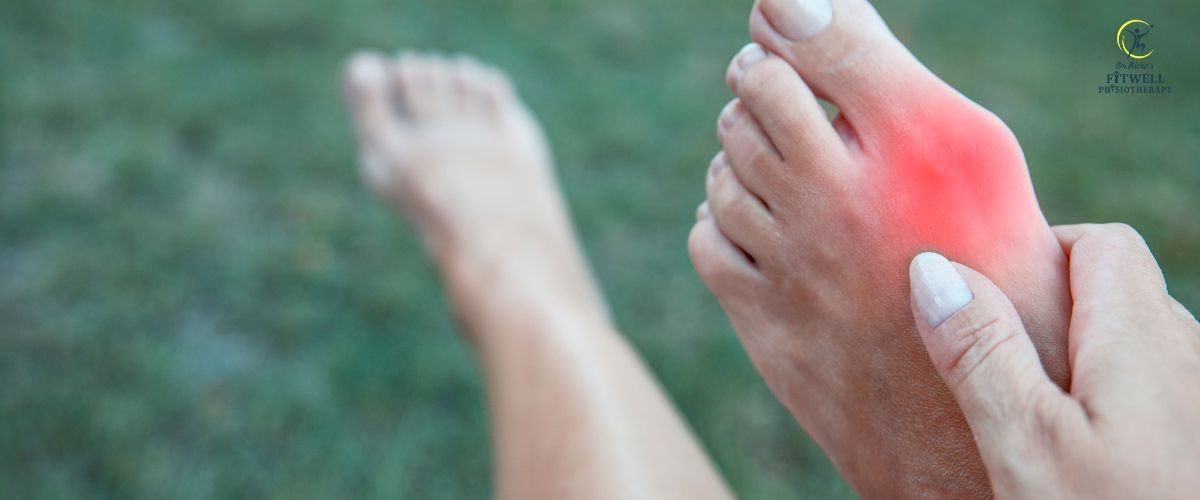
A bunion, or hallux valgus, is a bony bump that forms on the joint at the base of the big toe. This deformity develops when the big toe pushes against the next toe, causing the joint of the big toe to become enlarged and stick out.
Please submit your details below.
Symptoms
- Visible Bump: A noticeable bony protrusion at the base of the big toe.
- Swelling and Redness: The skin over the bunion might become red and tender.
- Pain: Persistent or intermittent pain around the joint.
- Restricted Movement: Difficulty moving the big toe, particularly bending it.
- Calluses and Corns: These may form where the first and second toes overlap.
Causes
- Genetic Predisposition: Family history of bunions can increase the likelihood of developing them.
- Footwear: Wearing tight, narrow, or high-heeled shoes can contribute to bunion formation.
- Foot Structure: Flat feet, overly flexible ligaments, and abnormal bone structure can predispose one to bunions.
- Arthritis: Inflammatory conditions such as rheumatoid arthritis can lead to bunions.
- Injuries: Foot injuries can increase the risk of bunion formation.
When to See a Physiotherapist
- Persistent Pain: If pain interferes with daily activities and is not relieved by over-the-counter pain relievers.
- Decreased Mobility: When the movement of the big toe or foot is limited or painful.
- Chronic Swelling: If swelling and redness persist and do not improve with rest.
- Difficulty with Footwear: When wearing shoes becomes painful or difficult.
- Post-surgery Rehabilitation: After bunion surgery, to regain strength and mobility.
Risks
- Progressive Deformity: Untreated bunions can worsen over time, leading to increased pain and further misalignment.
- Secondary Issues: Can cause other toe deformities, such as hammertoe.
- Chronic Pain: Persistent discomfort can affect mobility and quality of life.
- Complications from Surgery: Risks include infection, nerve damage, or recurrence of the bunion.
How to Prevent Bunions
- Choose Proper Footwear: Wear shoes with a wide toe box, good arch support, and avoid high heels.
- Foot Exercises: Regular exercises to strengthen foot muscles and maintain flexibility.
- Maintain a Healthy Weight: Reduces pressure on the feet.
- Use Orthotics: Custom orthotic devices can help correct foot alignment.
- Monitor Foot Health: Regularly check feet for signs of bunions, especially if there is a family history.
Treatments
Conservative Treatments:
- Ice and Elevation: To reduce swelling and pain.
- Pain Relievers: Over-the-counter medications like ibuprofen.
- Padding and Taping: To reduce pressure and prevent further deformity.
- Orthotic Devices: Custom shoe inserts to improve alignment and reduce pain.
- Physical Therapy: Exercises to strengthen muscles and improve flexibility.
Surgical Options:
- Bunionectomy: Removal of the swollen tissue around the big toe joint.
- Realignment: Straightening the big toe by removing part of the bone.
- Permanent Fixation: Using screws or plates to hold the bones in place.
- Arthrodesis: Removing damaged joint surfaces and inserting screws or plates to hold the joint together while it heals.
Bunions are a common foot problem that can cause significant discomfort and affect daily activities. Early intervention with conservative treatments can help manage symptoms and prevent progression. In severe cases, surgical options are available to correct the deformity and relieve pain. Regular foot care and appropriate footwear are crucial in preventing bunions.
Frequently Asked Questions
Related Conditions
How Fitwell Physiotherapy Can Help?
Dr. Richa’s Fitwell physiotherapy has an extensive team of physiotherapists all within their own specialist areas of physiotherapy. Whatever your condition, we guarantee that we will have the best physiotherapist for you. We assess, diagnose, plan, cure and care for you.
Fitwell Physiotherapy Clinic, Pune provides you best physiotherapy treatment in Kharadi, pune. We also serve Chandan Nagar, Vadgaon Sheri, Keshav Nagar, Wagholi & nearby Areas in Pune. We are experts in treating Neck Pain, Hand Pain, Back Pain, Lower Back Pain, Knee Pain, Stiff Neck, Sciatica, Arthritis, Stroke Paralysis & Post Surgical Rehab.
We provide Specialized physiotherapy treatments in Sports Injuries, Pre and post Surgery, Neurologic, Pediatric, Chronic Pain/Fatigue, Rheumatology, Women’s Health, Men’s Health, Ergonomics, Vestibular, Amputees & all sort of Pain treatment and lifestyle conditions.






















